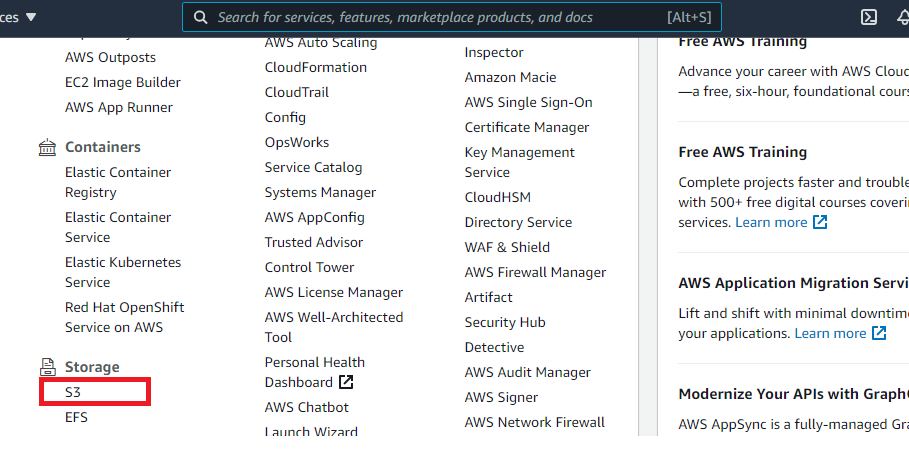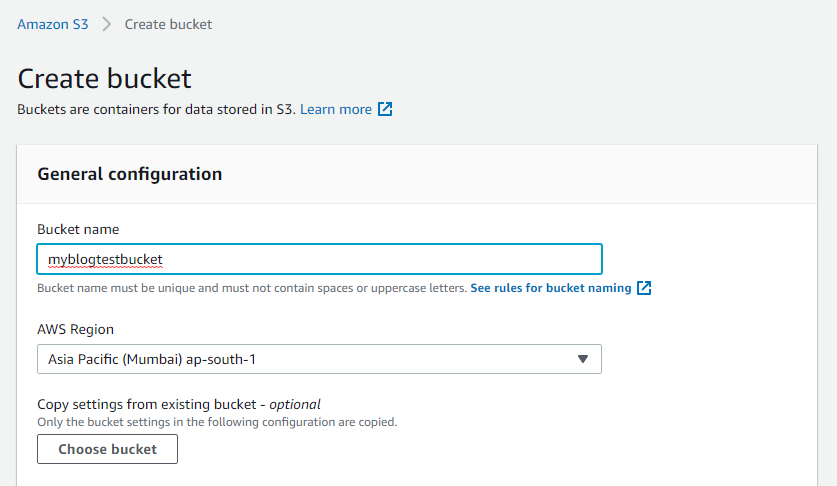

Guide To Using Amazon S3 Storage Classes - DZone Cloud
source link: https://dzone.com/articles/beginners-guide-to-using-amazon-s3-storage-classes
Go to the source link to view the article. You can view the picture content, updated content and better typesetting reading experience. If the link is broken, please click the button below to view the snapshot at that time.
Beginner’s Guide To Using Amazon S3 Storage Classes
Read a beginner’s guide of storage types classes, purpose, and usage in Amazon S3. This guide will help you understand everything about Amazon S3 Storage.
Join the DZone community and get the full member experience.
Join For FreeAs the world increasingly moves towards the cloud, there’s been an insane demand for the right cloud platforms and solutions over the last few years. Furthermore, with the gradual introduction of advanced technologies and concepts like data science, artificial intelligence, machine learning, and more into organizations’ operational modules, there is a constant need to have adequate storage space to accommodate increasing data generation requirements.
For those of you who are on the lookout for quality and cost-effective AWS cloud migration tools and services, this guide will introduce you to Amazon’s S3 Storage. This post will offer you extensive insights on what it is all about and help you make better decisions on migrating to this service.
Let’s get started.
Understanding AWS Simple Storage Service (S3)
In simple words, the S3 is an amazing service from amazon that provides developers secure and highly scalable object storage at a low cost. You can store and retrieve any amount of data at any time from anywhere on the web. S3 stores files in objects which makes it seamless to read and write.
For the uninitiated, S3 is also used to host static websites. It is one of the most user-friendly services from amazon, offering multiple options to upload data to S3, including manually managing the console or uploading programmatically via S3 API. After you log in to your AWS account, search for the S3 service from the services dropdown box at the top. Once done, you’ll land on the following page:

As you can see, there are zero buckets. So, we’ll create a new one. Click on the Create bucket button at the bottom:

Storage Classes/Types and Purpose

After creating the bucket, you can see the upload button and after clicking the upload button, you give property and you can see storage classes on the following page:
- S3 Standard
- S3 Intelligent-Tiering
- S3 Standard-Infrequent Access (S3 Standard-IA)
- S3 One Zone-Infrequent Access (S3 One Zone-IA)
- Amazon S3 Glacier (S3 Glacier)
- Amazon S3 Glacier Deep Archive (S3 Glacier Deep Archive)
1. S3 Standard
S3 standard is provided for frequently accessed data. It provides high durability and performance for storage objects. The S3 Standard is appropriate for a large variety of cloud use cases such as dynamic websites, mobile applications, and dynamic content distribution. It also enables low latency and high durability performance and is designed for multiple availability zones. The S3 Standard never risks a full-size disc. It supports a cloud migration process to other classes and supports SSL for encryption data.
2. S3 Intelligent-Tiering
The S3 Intelligent-Tiering is the only cloud storage class for automatic cost savings by moving to objects between four access tiers when changed. The S3 Intelligent tier storage classes optimize cost to move to the data most effective cost tiers without the overhead. S3 is two low latency for optimized frequent and infrequent accessed. It’s also known as unknown and unchanging classes.
3. S3 Standard Infrequent Access (S3 Standard IA)
The S3 standard Infrequent Access is ideal for data access for lower frequencies but requires rapid access when needed. The S3 IA offers high durability, high throughput, and low latency. It is also low per GB and price per GB but high in performance. It is ideal because of less frequency but high performance and long-term storage, backup, and recovery disaster for S3 standard IA.
4. S3 Standard One Zone Infrequent Access
The S3 is the same as IA less frequency but offers high performance. However, it requires rapidly accessed data. One zone offers low durability, high availability, and low latency of S3. It’s a good choice for secondary backup for on-premier data or easily recreated data.
The S3 One Zone is less priced when compared to the S3 standard IA (less by approximately 20%). it Is perfect for long-term storage and for data that is accessed less frequently. One Zone only three-zone available. That’s the reason name one zone. Not support more than three-zone. S3 One Zone IA stores data in a single availability zone so data event to lose.
5. S3 Glacier
The S3 Glacier is a service that provides low-cost highly durable archive storage in the cloud. The S3 Glacier is a low-cost storage class for data archiving, where data access is infrequent.
The S3 Glacier stores data as archives. An archive can represent a single file or a combination of several files to be uploaded as a single archive. Glacier uses server-side encryptions to encrypt all data. Amazon glacier Designed for low cost and long life.
6. S3 Glacier Deep Archive
The S3 Glacier Deep Archive provides the lowest-cost storage class and supports long-term retention and digital preservation for data that may be accessed only once or twice a year. It can also be used for backup and disaster recovery. Lastly, it has a minimum storage period of 90 days.
So, this was quite comprehensive, right? We believe you now have a better understanding of the different storage classes in Amazon S3.
Recommend
About Joyk
Aggregate valuable and interesting links.
Joyk means Joy of geeK